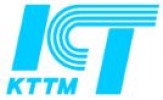Filter interviews by
Tox Pressotechnik Design Engineer Interview Questions and Answers
Tox Pressotechnik Design Engineer Interview Experiences
1 interview found
(1 Question)
- Q1. Ways to remove duplicate from string
- Ans.
Use a set to store unique characters and iterate through the string to remove duplicates.
Create an empty set to store unique characters.
Iterate through the string and add each character to the set.
Join the characters in the set to form the final string without duplicates.
Interview Preparation Tips
Top trending discussions






Interview questions from similar companies

Senior Engineer Interview Questions & Answers
Hyundai Construction Equipmentposted on 9 Sep 2021
I applied via Referral and was interviewed in Mar 2021. There were 3 interview rounds.
Interview Questionnaire
2 Questions
- Q1. About Process related to Assembly line
- Q2. Details of assembly line sequence
- Ans.
The assembly line sequence involves a step-by-step process of assembling parts to create a final product.
The process starts with the arrival of raw materials
Parts are then assembled in a specific order
Quality checks are performed at various stages
The final product is packaged and shipped
Efficiency and safety are key considerations throughout the process
Interview Preparation Tips

I applied via Approached by Company and was interviewed in May 2023. There were 2 interview rounds.

(2 Questions)
- Q1. 1) Hydraulics details
- Q2. GD&T explain, the difference between different GD&T
- Ans.
Geometric Dimensioning and Tolerancing (GD&T) is a system for defining and communicating engineering tolerances.
GD&T is a system used to define and communicate engineering tolerances for manufacturing processes.
Different GD&T symbols include position, concentricity, profile, perpendicularity, and parallelism.
Each GD&T symbol has a specific meaning and is used to control different aspects of a part's geometry.
For exampl...
Interview Preparation Tips
- Hydraulics
- gd&t
Skills evaluated in this interview


(2 Questions)
- Q1. Experience in software
- Ans.
Extensive experience in various software applications and programming languages.
Proficient in programming languages such as Java, Python, and C++
Experience with software development tools such as Git, JIRA, and Jenkins
Familiarity with database management systems such as MySQL and MongoDB
Experience with web development frameworks such as React and Angular
Ability to learn and adapt to new software quickly
- Q2. Technical knowledge and skills
Interview Preparation Tips
Skills evaluated in this interview

(5 Questions)
- Q1. What means the General tolerances
- Ans.
General tolerances refer to the acceptable range of variation in dimensions or properties of a part or product.
General tolerances are typically specified in engineering drawings to ensure parts fit and function properly.
They are usually expressed as a range of acceptable values, such as +/- 0.1mm.
Tolerances can vary depending on the specific requirements of the part or product.
Examples of general tolerances include dim...
- Q2. What is the material for wheel, Pin
- Ans.
The material for wheel is typically rubber or plastic, while the material for pin is usually metal such as steel or aluminum.
Wheel material is commonly rubber or plastic for flexibility and durability
Pin material is usually metal like steel or aluminum for strength and stability
- Q3. What are the grades of Hardwares like Screw, nut washer
- Ans.
Hardware grades are typically classified based on material composition, strength, and corrosion resistance.
Hardware grades are often denoted by a combination of letters and numbers, such as Grade 8.8 or Grade 316.
Higher grade numbers generally indicate a higher tensile strength or corrosion resistance.
Common grades for screws include Grade 2, Grade 5, and Grade 8, with Grade 8 being the strongest.
For nuts and washers, ...
- Q4. How to calculate motor power
- Ans.
Motor power can be calculated using the formula: Power (W) = Torque (Nm) x Speed (RPM) / 9.548
Calculate the torque required for the application
Determine the speed at which the motor will operate
Use the formula Power (W) = Torque (Nm) x Speed (RPM) / 9.548 to calculate motor power
- Q5. How welds are considered
- Ans.
Welds are critical in design engineering for joining metal components together.
Welds must be strong enough to withstand the intended load and stress.
Proper welding techniques and materials must be used to ensure the integrity of the weld.
Inspections and testing should be conducted to verify the quality of the weld.
Consideration should be given to factors such as joint design, welding process, and material compatibility...
Skills evaluated in this interview

I applied via Campus Placement and was interviewed before Apr 2022. There were 4 interview rounds.

They will give you a tablet drawing. You will have to draft it in AutoCad
(3 Questions)
- Q1. Questions about GDnT
- Q2. Basic commands of Auto Cad
- Q3. Basic commands of Inventor
- Ans.
Inventor is a 3D CAD software with basic commands like sketching, extruding, revolving, and filleting.
Sketching: Create 2D sketches to form the basis of 3D models
Extruding: Turn 2D sketches into 3D objects by pulling them along a specified axis
Revolving: Create 3D objects by revolving a 2D sketch around an axis
Filleting: Round off sharp edges and corners of 3D objects
Other basic commands include chamfering, mirroring, ...
(2 Questions)
- Q1. Tell your family background
- Ans.
I come from a diverse family background with a mix of cultures and professions.
My father is a doctor and my mother is a teacher.
I have two siblings, one is an engineer and the other is an artist.
We celebrate festivals from different cultures and enjoy exploring new cuisines.
Growing up in such a diverse environment has taught me to appreciate different perspectives and think creatively.
- Q2. You will be asked about future plans.
Interview Preparation Tips

Junior Engineer Interview Questions & Answers
Toyota Material Handlingposted on 1 Feb 2025
I appeared for an interview before Feb 2024.
Based on technical theory knowledge
It's on your technical theory knowledge
(2 Questions)
- Q1. What's Ohm's law ?
- Ans.
Ohm's law states that the current flowing through a conductor is directly proportional to the voltage across it, and inversely proportional to the resistance of the conductor.
Current (I) is directly proportional to voltage (V) and inversely proportional to resistance (R): I = V/R
It is named after German physicist Georg Simon Ohm
It is commonly used in electrical engineering to calculate current, voltage, and resistance ...
- Q2. Why we hire you ?
- Ans.
I have a strong technical background, excellent problem-solving skills, and a passion for learning and growing in the field of engineering.
I have a Bachelor's degree in Engineering with a focus on [specific field].
I have completed internships at [company name] where I gained hands-on experience in [relevant skills].
I am proficient in [programming languages/tools] and have a strong understanding of [engineering principl...
Interview Preparation Tips

I applied via Naukri.com and was interviewed in May 2023. There were 3 interview rounds.

(1 Question)
- Q1. How to calculate the weight?
- Ans.
Weight can be calculated by multiplying the mass of an object by the acceleration due to gravity.
Weight = mass x acceleration due to gravity
The standard acceleration due to gravity on Earth is 9.81 m/s^2
For example, the weight of a 10 kg object on Earth would be 10 kg x 9.81 m/s^2 = 98.1 N
(1 Question)
- Q1. How we calculate the PPM
- Ans.
PPM (Parts Per Million) is calculated by dividing the number of defective units by the total number of units produced, then multiplying by one million.
Calculate the number of defective units.
Calculate the total number of units produced.
Divide the number of defective units by the total number of units produced.
Multiply the result by one million to get the PPM value.
Interview Preparation Tips

Engineer Interview Questions & Answers
Hyundai Construction Equipmentposted on 23 Jun 2022
I applied via Recruitment Consulltant and was interviewed in Dec 2021. There were 2 interview rounds.
(1 Question)
- Q1. About UT Machine. CMM
(1 Question)
- Q1. About family and background
Interview Preparation Tips

Junior Engineer Interview Questions & Answers
Ge India Industrialposted on 10 Mar 2020
I applied via Recruitment Consulltant and was interviewed before Mar 2019. There were 3 interview rounds.
Interview Questionnaire
2 Questions
- Q1. Interview with leadership
- Q2. About your job profile and about after that question comes according to your reply
Tox Pressotechnik Interview FAQs
Tell us how to improve this page.
Tox Pressotechnik Interviews By Designations
Interview Questions for Popular Designations
Overall Interview Experience Rating
based on 1 interview experience
Design Engineer Interview Questions from Similar Companies
Tox Pressotechnik Design Engineer Reviews and Ratings
based on 8 reviews
Rating in categories
|
Design Engineer
41
salaries
| ₹2.5 L/yr - ₹8 L/yr |
|
Control Engineer
25
salaries
| ₹3.2 L/yr - ₹7.5 L/yr |
|
Senior Engineer
14
salaries
| ₹6.6 L/yr - ₹13 L/yr |
|
Assistant Manager Design
13
salaries
| ₹6.6 L/yr - ₹10.1 L/yr |
|
Assistant Manager
11
salaries
| ₹8.6 L/yr - ₹12 L/yr |

Ge India Industrial

Gilbarco Veeder Root

Kirloskar Toyota Textile Machinery

Hyundai Construction Equipment
- Home >
- Interviews >
- Tox Pressotechnik Interview Questions












